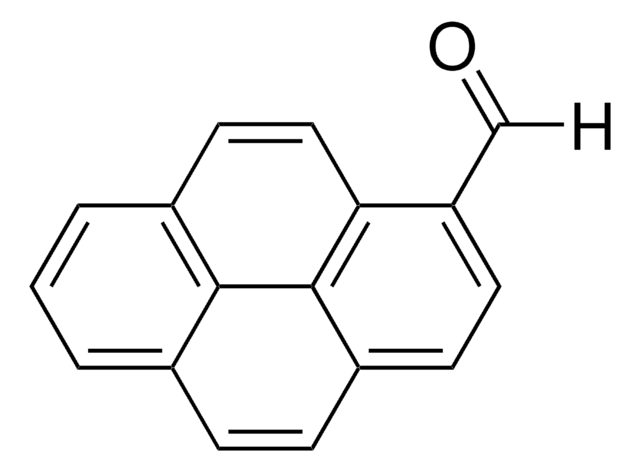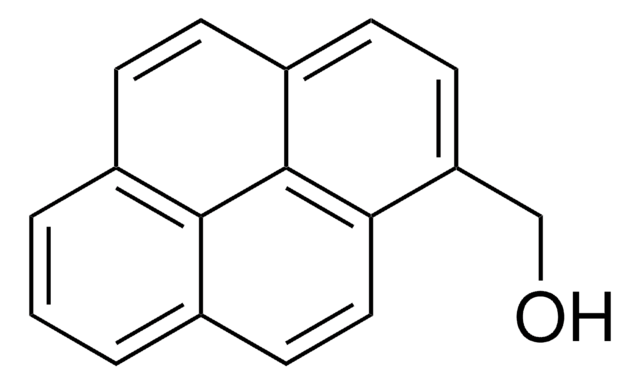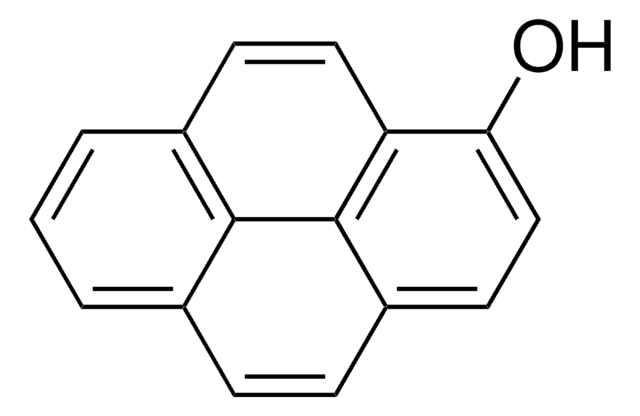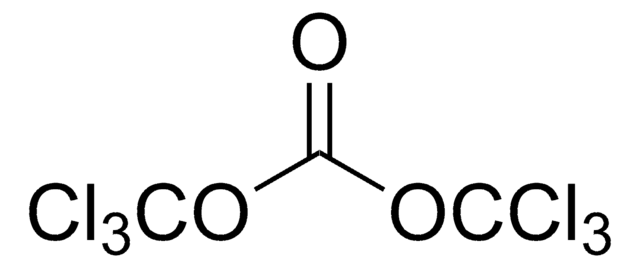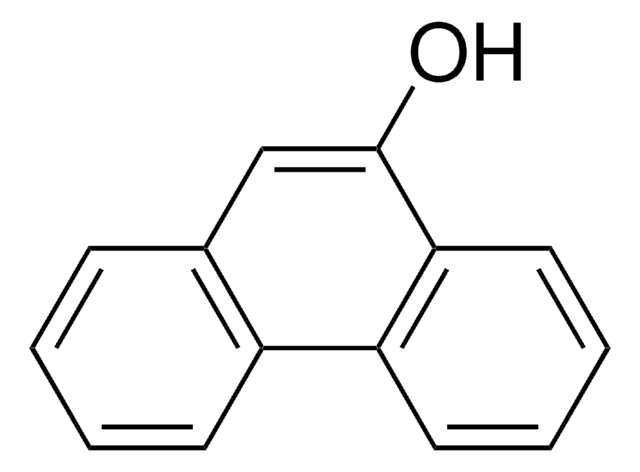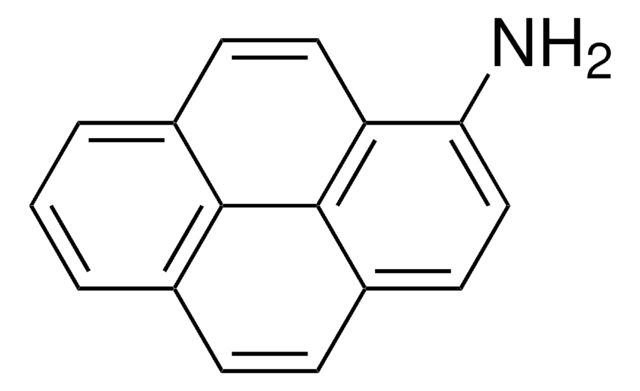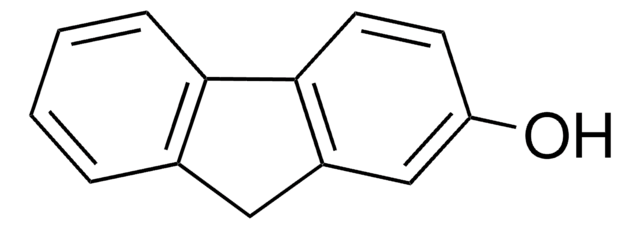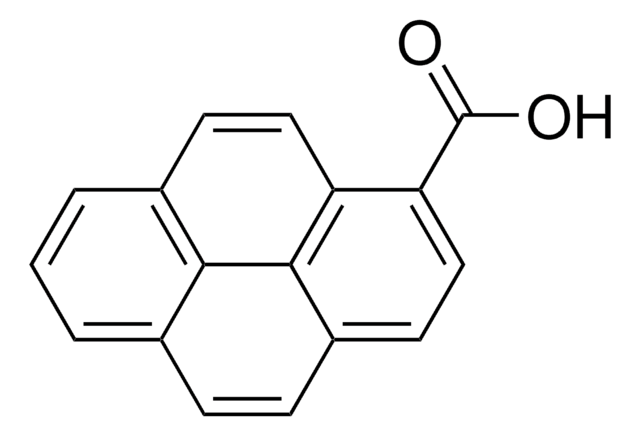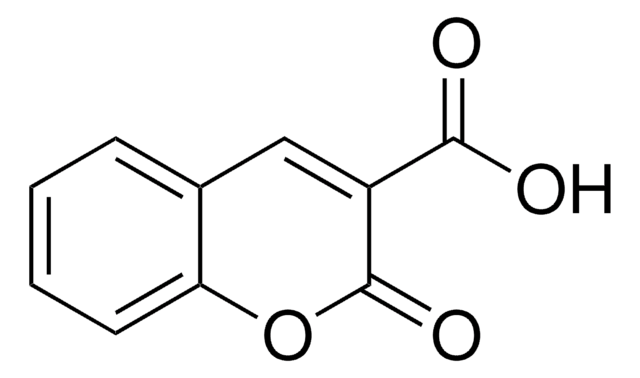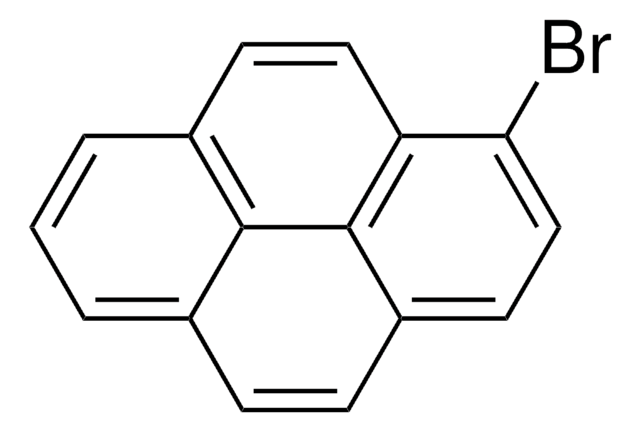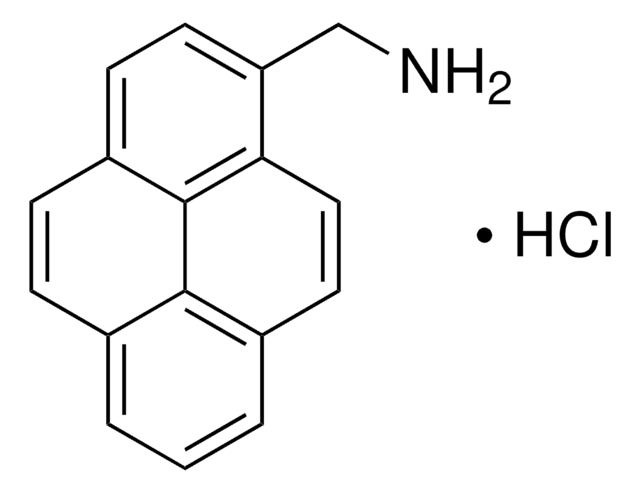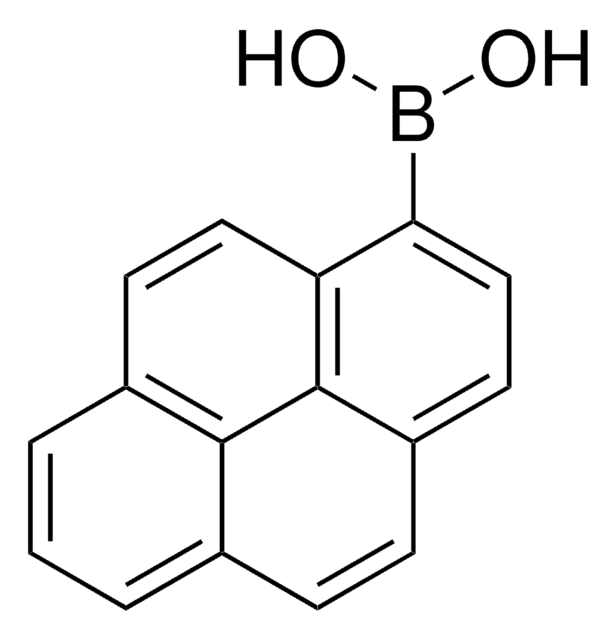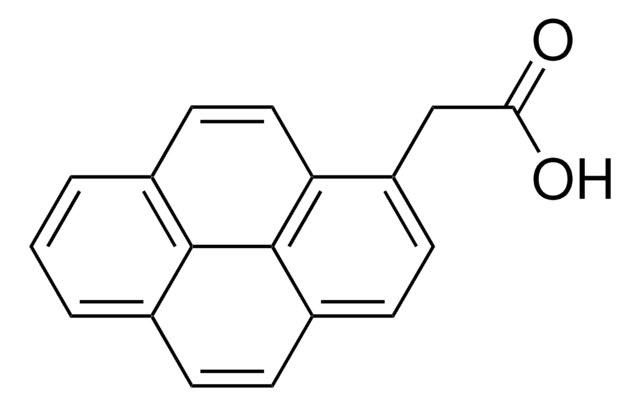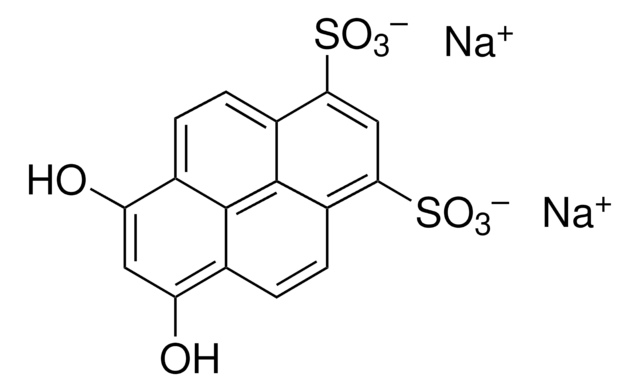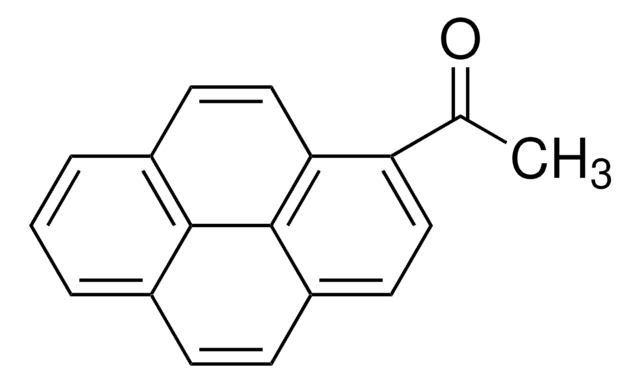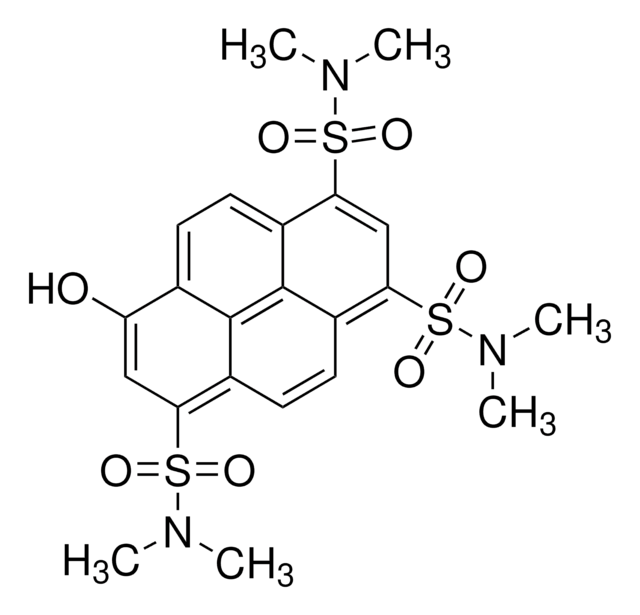All Photos(1)
About This Item
Empirical Formula (Hill Notation):
C16H10O
CAS Number:
Molecular Weight:
218.25
MDL number:
UNSPSC Code:
12352100
PubChem Substance ID:
NACRES:
NA.22
Recommended Products
Quality Level
Assay
98%
mp
179-182 °C (lit.)
SMILES string
Oc1ccc2ccc3cccc4ccc1c2c34
InChI
1S/C16H10O/c17-14-9-7-12-5-4-10-2-1-3-11-6-8-13(14)16(12)15(10)11/h1-9,17H
InChI key
BIJNHUAPTJVVNQ-UHFFFAOYSA-N
Looking for similar products? Visit Product Comparison Guide
General description
1-Hydroxypyrene, as a urinary metabolite, is a marker of polycyclic aromatic hydrocarbons (PAH) exposure. 1-Hydroxypyrene is an important biomarker of exposure to pyrene.
Application
1-Hydroxypyrene is suitable for use in following studies:
- To investigate the fast detection and quantification of 1-hydroxypyrene in tissue extracts from Nereis diversicolor exposed to sediment-associated pyrene by a simple fluorometric method.
- To investigate the effects of genetic polymorphisms of the cytochrome P450 1A1 (CYP1A1) and 2E1 (CYP2E1) and glutathione S-transferases mu (GSTM1) and theta (GSTT1) on urinary 1-hydroxypyrene and 2-naphthol levels in aircraft maintenance workers.
- To examine the the PAH exposure of cokery workers in an Estonian oil shale processing plant.
Storage Class Code
11 - Combustible Solids
WGK
WGK 3
Flash Point(F)
Not applicable
Flash Point(C)
Not applicable
Personal Protective Equipment
dust mask type N95 (US), Eyeshields, Gloves
Choose from one of the most recent versions:
Already Own This Product?
Find documentation for the products that you have recently purchased in the Document Library.
Customers Also Viewed
Anders M B Giessing et al.
Marine environmental research, 56(5), 599-615 (2003-08-21)
The uptake of polycyclic aromatic hydrocarbons (PAHs) by marine deposit-feeding invertebrates can be determined by screening for PAH-derived metabolites. We identified 1-hydroxypyrene as the only intermediate metabolite in tissue of four species of deposit-feeding polychaetes, Nereis diversicolor, Nereis virens, Arenicola
F J Jongeneelen
Toxicology letters, 72(1-3), 205-211 (1994-06-01)
A biomarker of human exposure to chemical agents provides a valuable parameter for assessing the extent and significance of the uptake by giving a measurement that is direct and integrated over time and exposure routes. Urinary 1-hydroxypyrene is currently tested
Christiana A Demetriou et al.
Occupational and environmental medicine, 69(9), 619-627 (2012-07-10)
The association between ambient air pollution exposure and lung cancer risk has been investigated in prospective studies and the results are generally consistent, indicating that long-term exposure to air pollution may cause lung cancer. Despite the prospective nature and consistent
Laura Campo et al.
International journal of environmental research and public health, 15(6) (2018-06-06)
Active smoking is associated with increased body burden of polycyclic aromatic hydrocarbons (PAHs); the aim of this study was to assess whether environmental tobacco smoking (ETS) increases the internal dose of PAHs. In 344 nonsmoking Italian adults, out of 497
Ase M Hansen et al.
International journal of hygiene and environmental health, 211(5-6), 471-503 (2008-01-29)
A total of 132 studies were identified, of which 25 studies addressed environmental exposure to polycyclic aromatic hydrocarbons (PAHs) in the general population. Of these 9 studies included children. Of 101 studies among workers in various occupations, 32 studies were
Our team of scientists has experience in all areas of research including Life Science, Material Science, Chemical Synthesis, Chromatography, Analytical and many others.
Contact Technical Service